Bangladeshi Tanks & AFVs 1972-Today
300+ tanks, 600 AFVs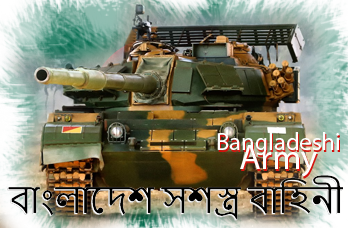 Models:
Models:
About 2,000 armoured vehicles 1972-2023.
Origins of Bangladesh Shoshostro Bahinī
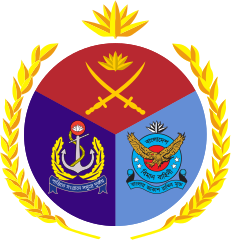 The Bangladesh Armed Forces (Bengali: বাংলাদেশ সশস্ত্র বাহিনী) are the combined military forces of the People's Republic of Bangladesh. For what we are concerned, the Bangladesh Army. They are placed under the jurisdiction of the Ministry of Defence, directly administered by the Armed Forces Division of the Prime Minister's Office. The President is the Commander-in-Chief. Despite the economical difficulties of the country, Bangladesh has the third-largest defence budget in South Asia and according to the Global Firepower index and is the third most powerful military force in South Asia.
The Bangladesh Armed Forces (Bengali: বাংলাদেশ সশস্ত্র বাহিনী) are the combined military forces of the People's Republic of Bangladesh. For what we are concerned, the Bangladesh Army. They are placed under the jurisdiction of the Ministry of Defence, directly administered by the Armed Forces Division of the Prime Minister's Office. The President is the Commander-in-Chief. Despite the economical difficulties of the country, Bangladesh has the third-largest defence budget in South Asia and according to the Global Firepower index and is the third most powerful military force in South Asia.
A few words about Bangladesh itself: It is one of the youngest countries in the world. For one, it inherited and ancient province of India, basically the province of Bengal, the north "march" of the Indian Empire, with impassable jungles to contain bellicose tribes coming from south-east Asia. Most of the southern part of the country was marshy, with an immense delta, making crossing difficult, which was done in the northern highlands. This natural configuration weighted much in the province population centers and agriculture types.
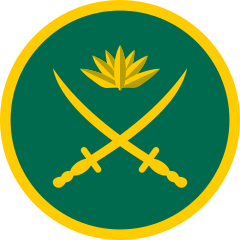 The partition of India (August 15th 1947) had this territory partitioned as East Bengal, with a Muslim majority, but attached to the newly created state of Pakistan. Ethnic and sectional discrimination however had the Bengalis under-represented in the Pakistan military. Officers were just less than 5% of overall force in 1965. West Pakistanis believed the latter were "martially inclined" unlike Pashtuns and Punjabis and East Pakistan was not happy for the returns of its massive contribution, seeing no military contracts or jobs in the military sector. The Indo-Pakistani War of 1965 over Kashmir gradually this defiance and sentiment of insecurity among Bengalis.
The partition of India (August 15th 1947) had this territory partitioned as East Bengal, with a Muslim majority, but attached to the newly created state of Pakistan. Ethnic and sectional discrimination however had the Bengalis under-represented in the Pakistan military. Officers were just less than 5% of overall force in 1965. West Pakistanis believed the latter were "martially inclined" unlike Pashtuns and Punjabis and East Pakistan was not happy for the returns of its massive contribution, seeing no military contracts or jobs in the military sector. The Indo-Pakistani War of 1965 over Kashmir gradually this defiance and sentiment of insecurity among Bengalis.
In 1965 they indeed had a single, under-strenght and under-equipped infantry division and 15 combat aircraft, no tank support, and so an easy picking for INDIA if the later wished so. Although the "East Bengal Regiment" was formed on 15 February 1948 it was filled with westerners, Bengali members of the British Indian Army Pioneer Corps and Bihar Regiment. However until 1965, eight battalions were raised with a composition which started to reflect better the population.
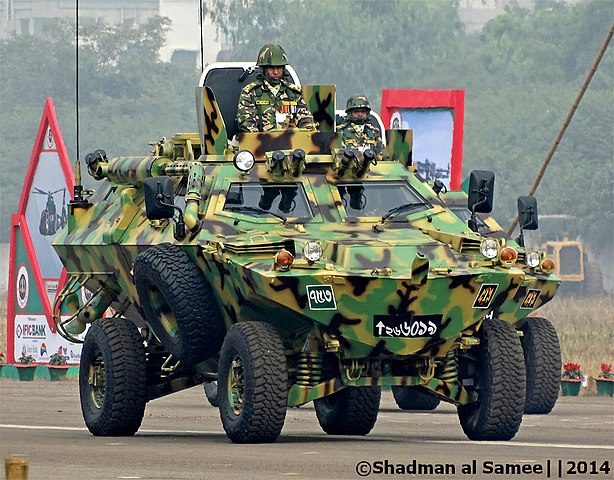
Otokar Cobra
The Bangladesh Liberation War started with the Awami League emerging from the 1970 elections, but president General Yahya Khan refused to appoint Sheikh Mujibur Rahman as PM, launching Operation Searchlight, a "pacification" of East Pakistan helped by the Pakistani army. In a short notice brutalities made a reported 300,000 and up to 3 million victims, causing the United Nations to protest and ask explanations from the Pakistani Government. Mutinies followed, notably in the ranks of the loyal East Pakistan Rifles and joined the Mukti bahini in massive insurrection. On 17 April 1971, Muhammad Ataul Gani Osmani took the head of the latter and on 11-17 July 1971 local commanders created Bangladesh Forces and started to recruit and organized the army.
On 21 November 1971, Bangladeshi Forces was divided into three services, receiving a modest assistance from the Indian Government after the start of the war. On 3 December 1971, the matter which started as a partition ended with the 1971 India-Pakistan war. The Indians operated with the Bangladesh Armed Forces and won several critical engagements, so on 16 December 1971 reddition was accepted and Bangladesh emerged as a new independent state, in which the army had played an instrumental role, reflected in its great prestige and funding up to this day.
Constitution and development of the armed force
The newly formed Bangladeshi armed forces integrated in 1972 the former guerrillas of the Mukti Bahini, and General Osmani took the head of the HQ. Active discrimination became the norm, in favor of the Mukti Bahini and against Bengali "regular" officers from the former Pakistani armed forces. This heated up to the assassination of newly elected president Sheikh Mujib on 15 August 1975. Khondaker Mostaq Ahmed became the new President of Bangladesh , assisted by Major General Ziaur Rahman.General Khaled Mosharraf came to power in turn on 3 November, overthrown by the socialist faction led by Col. Abu Taher on 7 November, restoring Ziaur Rahman to power. The military was reorganised to cease ancient revalries. Ziaur Rahman was overthrown in the 1981 coup, Lt. Gen. Hossain Mohammad Ershad taking power, backed by Abdus Sattar. Later Hossain Mohammad Ershad came to power, making a transition towards democracy in 1991.
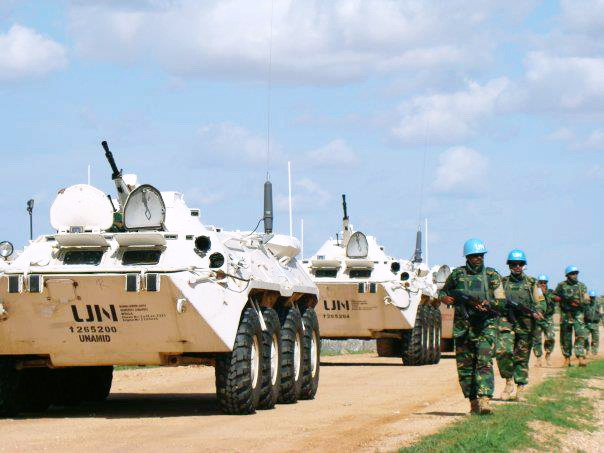
From there, the end of the cold war, the army started to change provider. Until then, it relied on India and the Soviet Union. But stronger ties were created in contrast with the People's Republic of China and the United States. The Bangladesh Army for the first time took part in UNPSO and a 2,000 men contingent took part in the first Gulf War. Bangladeshi Peace Keepers next took part in operations in Namibia, Cambodia, Somalia, Uganda, Rwanda, Mozambique, former Yugoslavia, Liberia, Haiti, Tajikistan, Western Sahara, Sierra Leone, Kosovo, Georgia, East Timor, Congo, Côte d'Ivoire and Ethiopia, the second largest controbutor in 2008 with 9,800 UN troops. Until the 1997 cease fire, the Bangladeshi Army took part in COIN (counterinsurgency) operations in the Chittagong Hill Tracts (Shanti Bahini separatists) and in 2001, clashed with the Indian Border Security Force (BSF), northern sector. Former PM Prime Minister Begum Khaleda Zia started a wave of new reforms and renewal of the equipment from China.
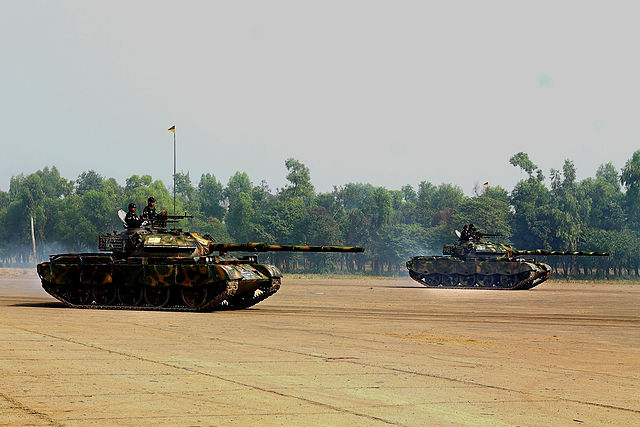
Type 69G2 as of today
Organization
Border Guards Bangladesh (formerly Bangladesh Rifles) are placed under the Ministry of Home Affairs in peacetime, with the option of being commanded by the Bangladesh Army in wartime. The policy is formulated and executed by the Armed Forces Division (AFD), in semi-independence from the MoD which only secure state funding based on requirements. For a good coordination with the foreign and intelligence policy, the president and PM has a small advisory board of 6 high rank officers from the three military services. Armed Forces Day was created on 21 November, dedicated to the three services. The administrative HQ is located at Bangabhaban and the Division Headquarters at Dhaka, having authority on all cantonments and military installations in Bangladesh.Armoured Corps
Infantry: East Bengal Regiment
Bangladesh Infantry Regiment (BIR)
Para Infantry Battalion
Para-Commando Brigade
-
Units Support
- Army Aviation
- Air Defense Artillery
- Corps of Engineers
- Regiment of Artillery
- Military Intelligence
- Corps of Signals
-
Auxiliary Services
- Corps of Military Police (CMP)
- Army Services Corps (ASC)
- Ordnance Corps
- Corps of Electrical and Mechanical Engineers (EME)
- Army Education Corps (AEC)
- Army Medical Corps (AMC)
- Army Dental Corps
- Armed Forces Nursing Services (AFNS)
- Army Corps of Clerks (abbreviated as ACC, made of only NCOs and JCOs)
- Judge Advocate General's Department (JAG Dept.)
- Military band
- Remounts, Veterinary and Farms Corps (RV & FC)
- Ministry of Defence Constabulary (MODC)
Links/Sources
globalsecurity.org: Modernization of the Bangladeshi Armyglobalsecurity.org: Equipment
Videos
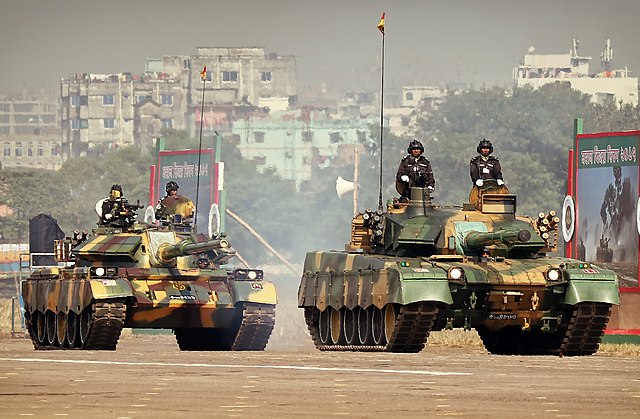
Bangdadeshi MBT
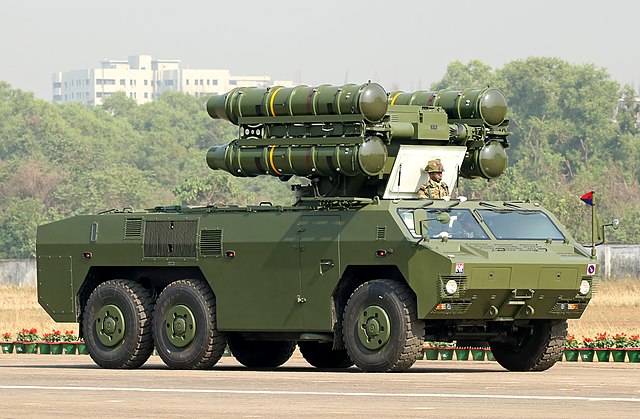
FM90 Crotale
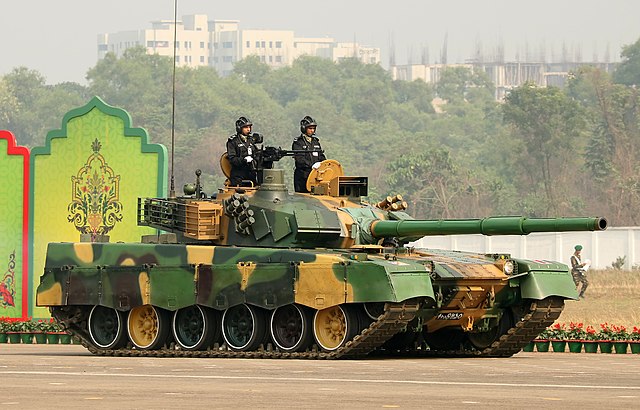
Bangladeshi MBT 2000
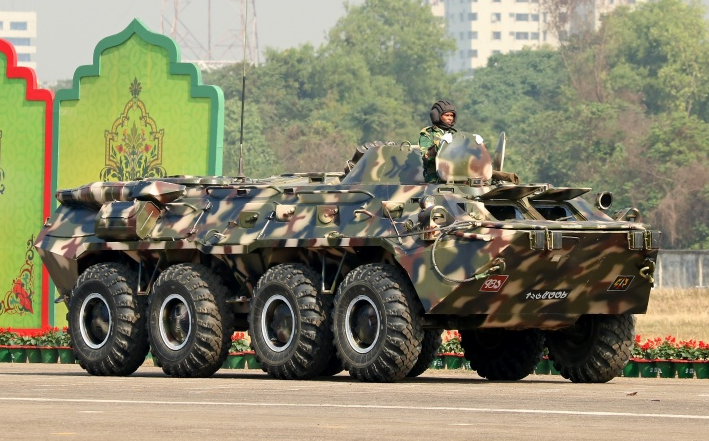
BTR-80
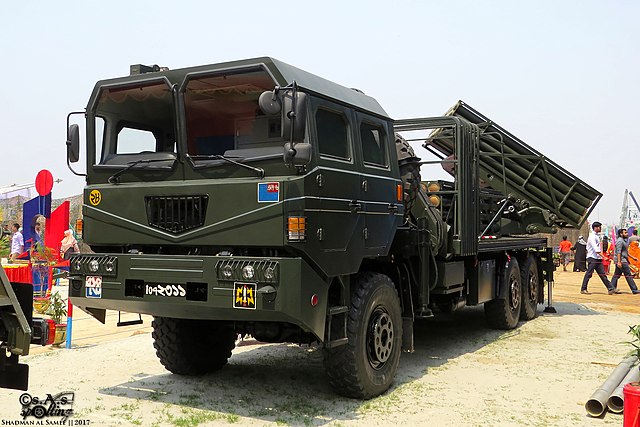
Bangladesh Army WS-22 MLRS
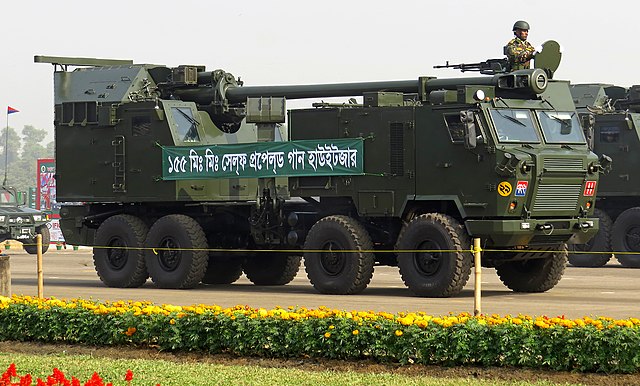
Bangladesh Army Nora B-52 155mm SPG
 MBT-2000 Heavy Tanks (2015)
MBT-2000 Heavy Tanks (2015)

44 Delivered from 2015.
 VT-5 MBT (2020)
VT-5 MBT (2020)
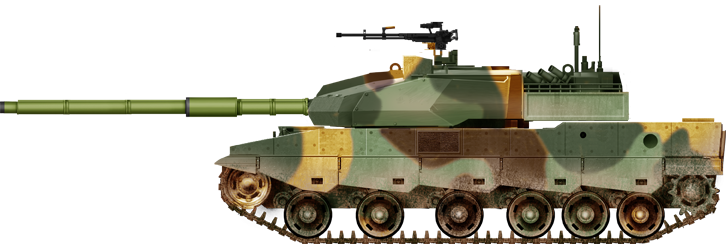
Medium Tank, export verison of the Type 15. 44 to be delivered until 2025, 150 to 2030.
 Type 69G MBT (1990)
Type 69G MBT (1990)

Type 69-II

Type 69-IIG Mk.2
58 delivered by 2010. Modernized version. 50 Type 69-I and IIA tanks were purchased from China in 1991. 5 Type 653 ARV received in 1993 and 3 Type 654 in 2012. 58 Type-69-II tanks were rebuilt to the Type 69-IIG version in 2010-2013: Bangladesh Army Engineers improved its weaponry and armor system to make it more effective.
Type 69-IIG: An upgraded Bangladeshi model with the following modifications:
-Bi-axis stabilised Type-83A (improved L-7 with bigger bore) 105mm smoothbore gun (NATO compatible), with semi-automatic loader, capable of firing ATGMs -New fire control system (FCS), laser range-finder, thermal imaging sights & combat data link
-850 hp (630 kW) diesel engine
-Chinese 3rd generation explosive reactive armour (ERA) protection, automatic collective fire suppression system, Laser warning receiver, NBC suite.
-New communications and navigation equipment (including GPS receiver)
-Rubber padded track
 Type 59 Durjoy MBT ()
Type 59 Durjoy MBT ()

Circa 200 Type 59s delivered by 2000 (circa 700 in all since 1980), 174 by 2015 of the Durjoy version and introduction of the Mark II in 2017. See the article.
 T-54/55 MBTs
T-54/55 MBTs
1971 Liberation war: Bangladeshi T-55 providing ground troop support
30 T-54 Purchased to Egypt, ordered in 1975 as aid. 15 modernized with Chinese assistance but non-modernized versions no longer active in 1990. T-55 were delivered in 1971 to help the liberation war (Indo-Pakistani war). Modernized T55s account for 122s combined with the T-54s, still active in 1990, however 100 T-54s and T-55s were allegedly estimated in service in 2004-2006. They took part in the fight against the Pakistani Army. Many had been saved as gate guardians. See also and also.
 Type 62 Light Tanks
Type 62 Light Tanks
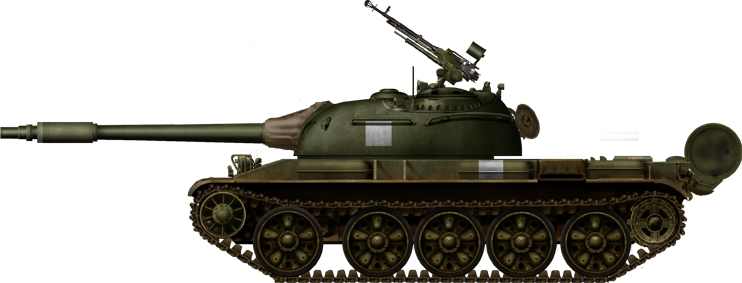
40 purchased to China, light tank 85 mm gun. No longer in the inventory past 2010, replaced by the VT-5. Apart a lavishly colored gate guardian, it seems the standard was plain olive green with limited markings.
 Type 62 IFV/SPH/APC
Type 62 IFV/SPH/APC
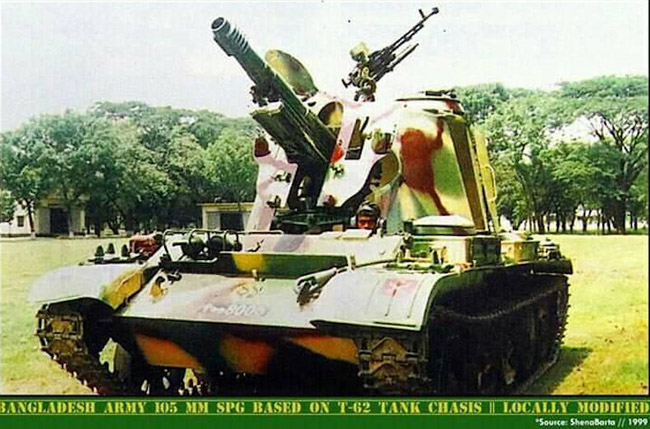
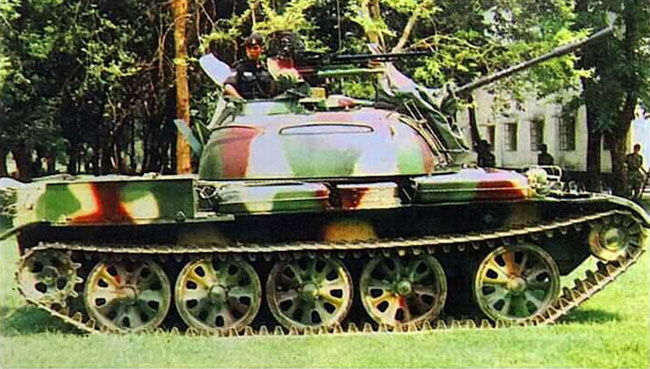
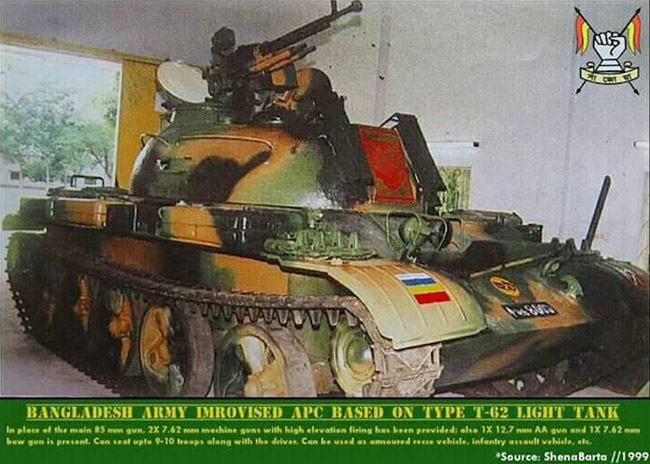
The Bangladesh Army converted some of the fleet of Type-62 Light Tank (36 ordered in 1984) to a Self Propelled Howitzer (SPH), Infantry Fighting Vehicle (IFV) and Armored Personal carrier (APC). Conversion were performed in Bangladesh by BA engineers and technicians, possibly at the "Heavy Vehicles Factory" in India, and later transferred. Some sources states they were instead converted at the Bangladesh Ordnance Factories and in the end there were 14 upgraded as IFVs, 14 as APCs (no photo) and 22 as self-propelled howitzer guns. The latter case is perhaps the best documented: The original turret was removed and a light howitzer Oto Merla Modello 56, 105mm (range 12-15 km) was fitted in an apparently fixed casemate. Between the lack of traverse and poor range they were only featured organically as a stopgap between better models could be purchased. And it was the case:
The IFV had the main gun removed and replaced by a 30mm main gun and 12.7mm heavy machine gun in top, but the only known photo shows the odd location of the main gun, well above the gun cradle. The model was replaced in more recent times by modern Chinese SPAAGs
The APC is the most oddball of them all, with again the gun turret removed, but the latter stays in place, instead of building a casemate above like on the Indian Tarmour, the turret defining an area just large enough for 5-6 troops, and defended by a standing MG-gunner on top, like on the original Type 62. Access and exit were through the former gun port, with doors.
 YW-531 APC
YW-531 APC
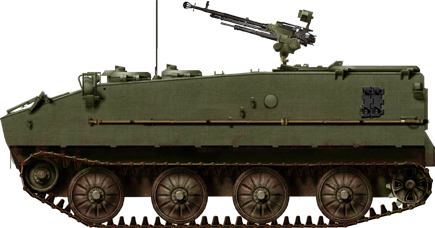
The YW-531 was the Chinese PLAN main tracked APC, the Type 63, introduced in 1963 and of which and estimated 8,000 were delivered by Norinco and many sub-contractors. Due to its low price tage and easy maintenance, it also had been widely exported, among these Bangladesh received 50 vehicles between 2000 and 2005. They may be still in service today in their basic form with a 12.7 mm HMG. Photos of it are rare.
 MT-LB
MT-LB
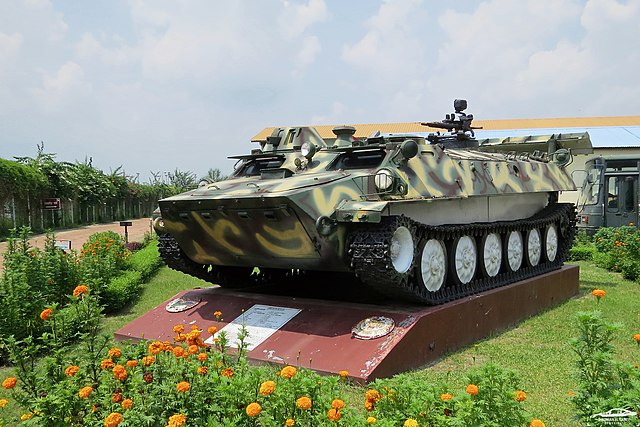
The tracked APC and general purpose vehicle of Russian construction was acquired by Bangladesh from 2005 with a first batch of 50 acquired and up to 134 delivered total according to main sources. It somewhat dwindled down to 130 in 2020 and retirement is sechule gradually with 100 or less in 2030.
 BTR-70/80
BTR-70/80

Around 53 of the BTR-70 alone were acquired in 1995, then both combined (including BTR-80 IFVs) amounted to 130 vehicles in 2005. Frome there, numbers went down, mostly due to the retirement of second hand BTR-70s with 75 operational vehicle by 2015 and 70 today.
 Otokar Cobra
Otokar Cobra
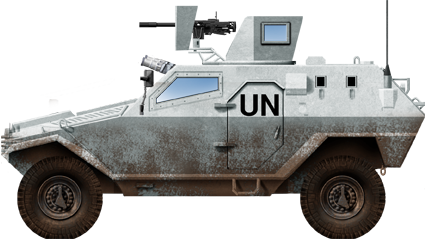
Received 22 Cobra IMV in 2007–2008, 22 in 2013, and 67 Cobra II MRAP in 2017–2018.

Modern Tanks
Modern MBTs posters

Denel Bagder (2018)

Type 16 MCV (2016)

Gepard 1A2 last rounds 2011

SANDF

Russian AFVs

Main Battle Tanks